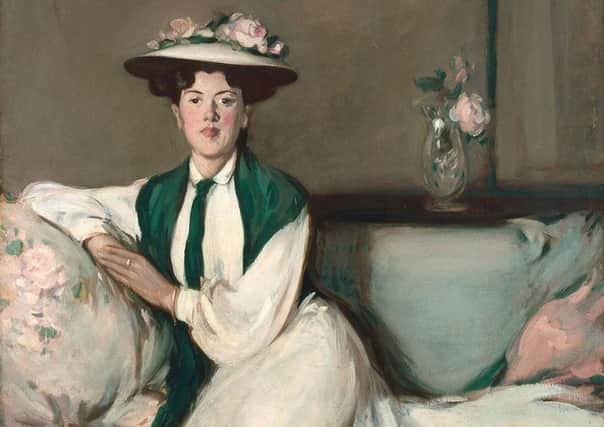Book review: JD Ferguson: Modern Scottish Painting


JD Fergusson: Modern Scottish Painting
Edited by Alexander Moffat and Alan Riach
Luath Press, £10
Many years ago I found in a second-hand bookshop the catalogue of an exhibition of British art, held under the auspices of the British Council. It included work by Ramsay, Raeburn and Wilkie alongside Reynolds, Gainsborough, Constable and the like.
It also included a helpful map of Britain, but it stopped at Berwick. As an artistic entity, Scotland did not exist. This sort of imperial presumption infuriated JD Fergusson and was part of the inspiration of his polemical book Modern Scottish Painting. First published in 1943 by William McLellan in Glasgow, it had been commissioned by McLellan in February 1939 and so may have been prompted by the major exhibition of Scottish art that had opened in the Royal Academy the previous month. Fergusson’s blast of modernism would have been a fierce riposte to the perceived conservatism of the exhibition. It was curated by James Caw and Stanley Cursiter, and out of more than 100 names of the Honorary Committee listed in the catalogue, there are barely a dozen who are not either knighted or titled. Nevertheless, just as the impact of the exhibition was lost in the outbreak of war, so publication of Fegusson’s book was delayed. When it came out, the edition, on cheap paper and without illustrations, reflected the austerities of the time.
Advertisement
Hide AdFergusson would, I think, have been delighted to see his book now republished at a time when his strongly held views about art and nation are more topical than ever. Sandy Moffat and Alan Riach have edited the new edition and, while correcting the lack of illustrations in the original, they have preserved its modest aspect. It must be said the illustrations too remain modest. Fergusson’s text includes a section of 21 in colour, but the excellent introduction is only illustrated with tiny grey images in the margin.
Fergusson, the most intellectual, or at least the most outspoken, of the four Colourists, was the only British artist to be a member of the circle in Paris that created Modernism in the years before the outbreak of the First World War.
When he wrote about modern art, he knew what he was talking about. His paintings in those critical years were highly original. He shared the ideas that inspired Picasso, Braque and Matisse and others to break with age-old traditions in painting, but he interpreted them in his own way. What this edition brings out, however, is how much the line he took was shaped by his sense of himself as a Scot. This gave him something to build on and, even more, something to react against.
His great painting, Les Eus, a circle of life-size, naked figures dancing beneath trees laden with fruit, may have been inspired by Matisse’s La Danse and Diaghilev’s Ballets Russe, but it also looks back to dances painted by Wilkie and David Allan. For what Fergusson’s painting has that Matisse’s lacks is a sense that it is a social scene. Men and women are dancing together naked and happy in their sexuality. Fergusson loved painting female nudes. In Les Eus, or in Rhythm, a painting of a heroic modern Eve, he gave his women great strength and dignity, but his interest was also, as you might say, more practical.
Like his contemporary DH Lawrence, and indeed like Picasso, he saw a direct link between sexual energy and creativity. Les Eus, like much of what he writes in his book, is a direct attack on sexual repression in Scotland as a manifestation of what he identifies as a wider and crucial lack of imaginative freedom.
Art was the tool to break that open and release the nation’s potential and Moffat and Riach rightly see his book as a manifesto. Fergusson, they argue, should be set alongside Hugh MacDiarmid (with whom he collaborated) and others whose work helped define – or should we say release? – a new and modern Scotland.